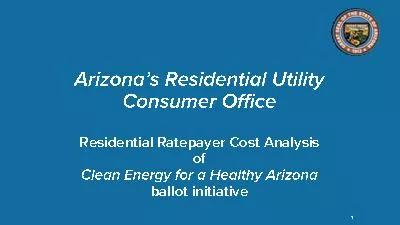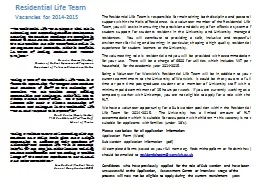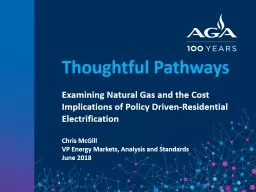PDF-Residential Ratepayer Cost Analysis
Author : jordyn | Published Date : 2021-05-15
of ballot initiative 1 Executive Summary RUCO conducted an assessment of the Clean Energy for a Healthy Arizona ballot initiative which requires 50 renewable energy
Presentation Embed Code
Download Presentation
Download Presentation The PPT/PDF document "Residential Ratepayer Cost Analysis" is the property of its rightful owner. Permission is granted to download and print the materials on this website for personal, non-commercial use only, and to display it on your personal computer provided you do not modify the materials and that you retain all copyright notices contained in the materials. By downloading content from our website, you accept the terms of this agreement.
Residential Ratepayer Cost Analysis: Transcript
Download Rules Of Document
"Residential Ratepayer Cost Analysis"The content belongs to its owner. You may download and print it for personal use, without modification, and keep all copyright notices. By downloading, you agree to these terms.
Related Documents














